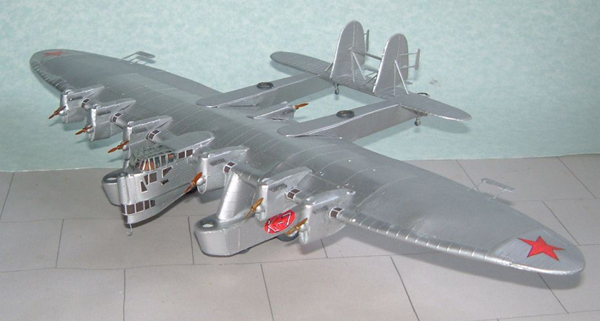
Scratchbuilt 1/144 Kalinin K-7
By Joel Christy
Introduction
The Kalinin K-7 was the closest any aeroplane has come to being a real “flying fortress.” This giant with a wingspan of 173 feet had eight gun positions and could have carried up to 16 guns. It had a bomb load of 32,187 pounds, 12,000 more than a B 29! Powered by no less than seven Mikulin M34 F engines the K-7 could cruise at a speed of 112 mph and had a range of nearly 1,000 miles. Basically a flying wing with two booms the aircraft was built at a time when the “wing was the thing.” Like the Junkers G-38 and the Tupolov ANT-20 the wings were used to contain many of the features usually associated with the fuselage. The K-7 only had a short nacelle to house the flying crew but the wings could accommodate troops or cargo as well as a 19 ton bomb load. The huge aircraft was mounted on two large gondolas containing three wheels each. These also served as the access to the the aircraft by means of stairs in the front columns and ladders in the rear columns. The giant aeroplane used servo trim tabs to control all the control surfaces.
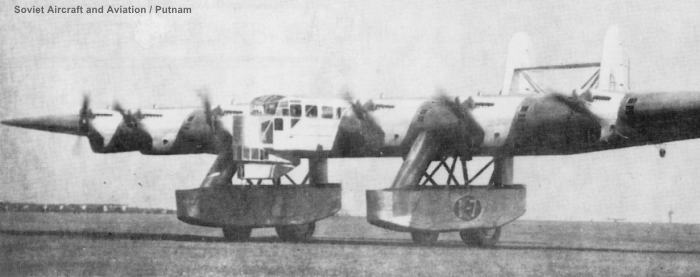 The K-7 was the brain-child of Konstantin Kalinin, a World War one pilot who served with the Soviets during the Russian civil war. In 1923 he took out a patent on the elliptical wing plan form, ten years before it was utilized in the Supermarine Spitfire. After using the wing design on several types, Kalinin came up with the K-7 bomber in 1933. The first flight indicated “flutter” in the tail booms but otherwise the aircraft flew and handled well. However on its ninth flight one of the booms suddenly failed and the giant aircraft crashed killing 15 of the twenty people on board. And that was the end of one of aviation's largest and strangest bombers ever to fly.
The K-7 was the brain-child of Konstantin Kalinin, a World War one pilot who served with the Soviets during the Russian civil war. In 1923 he took out a patent on the elliptical wing plan form, ten years before it was utilized in the Supermarine Spitfire. After using the wing design on several types, Kalinin came up with the K-7 bomber in 1933. The first flight indicated “flutter” in the tail booms but otherwise the aircraft flew and handled well. However on its ninth flight one of the booms suddenly failed and the giant aircraft crashed killing 15 of the twenty people on board. And that was the end of one of aviation's largest and strangest bombers ever to fly.
The Model
When I first came across the Kalinin K-7 I wanted to model it but it was put on the back burner for several years. I had fairly good plans from Modelist Konstructor so I scaled them out to 1/144 and set to work. Starting with the wing I decided to build it around a 40 thou plastic sheet with ribs attached to the top and bottom of the plastic to form the complex contours. When this was ready to cover I cut rough shapes out of 15 thou sheet and scribed the areas on the inside with a ball point pen to get a subtle indication of ribs showing through fabric. The central part of the wing was left alone as it was sheet metal. I then covered the entire wing with the 15 thou sheet and left it to dry thoroughly. After cleaning up the assembly I covered the wing front edges with heat formed strips to form a smooth leading edge. When all was dry the completed thick wing was scribed with panel lines.
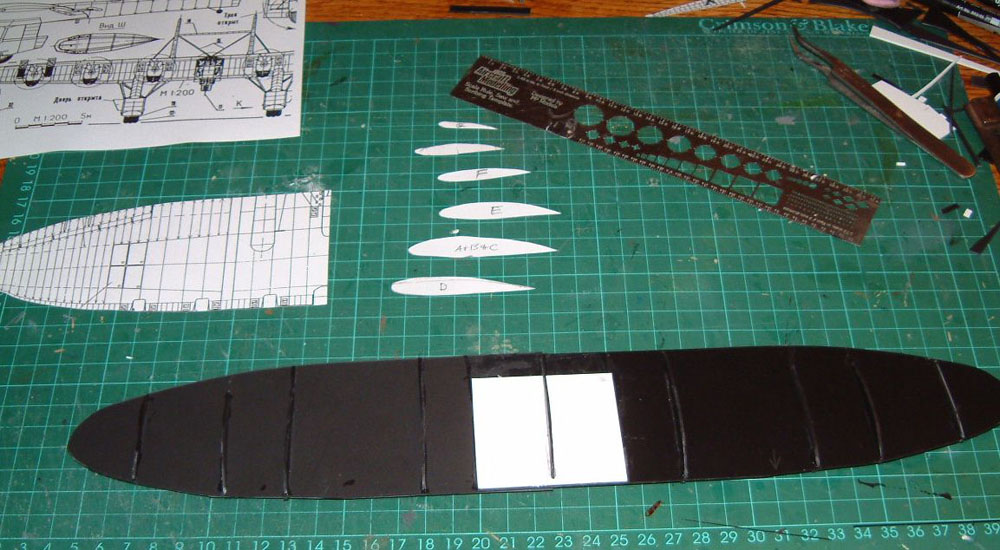
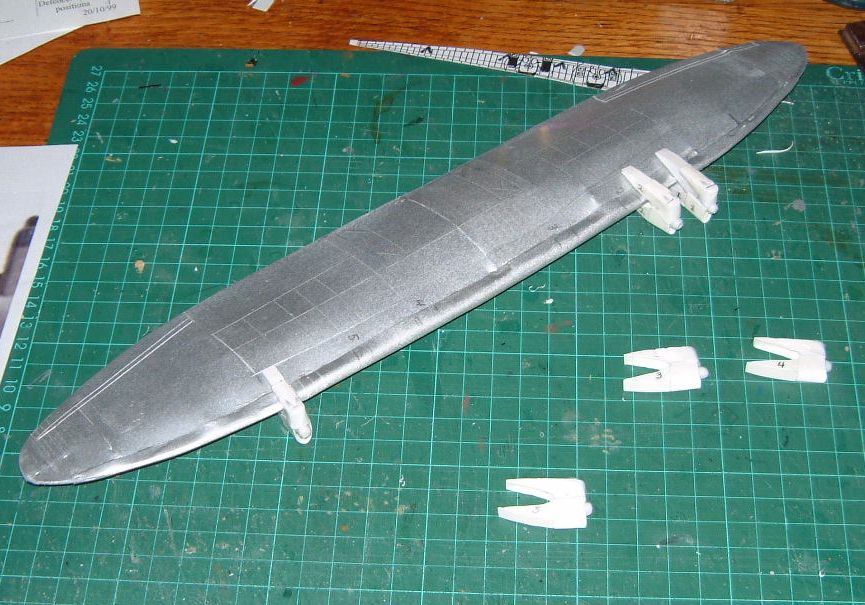
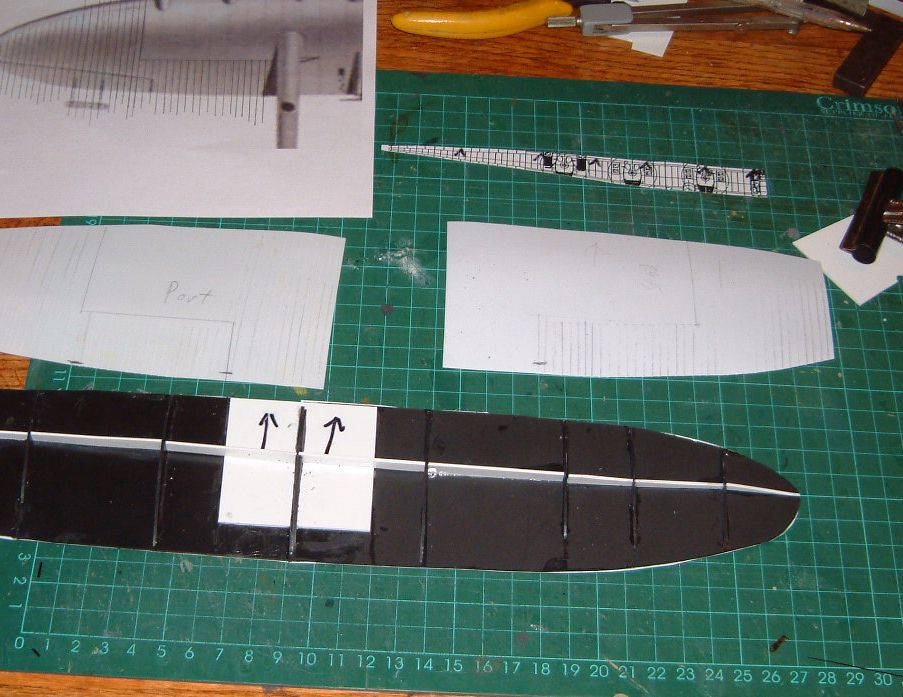
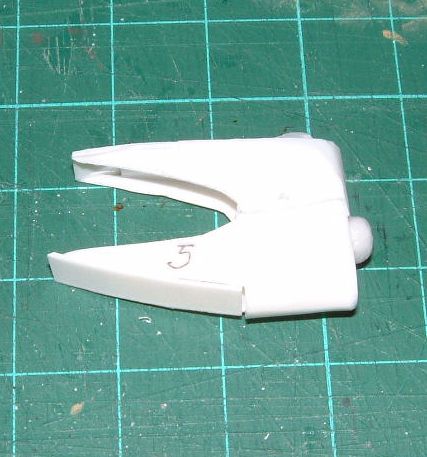
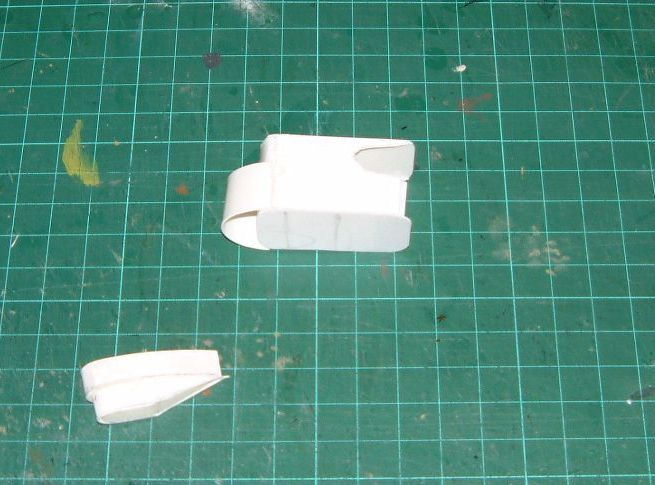
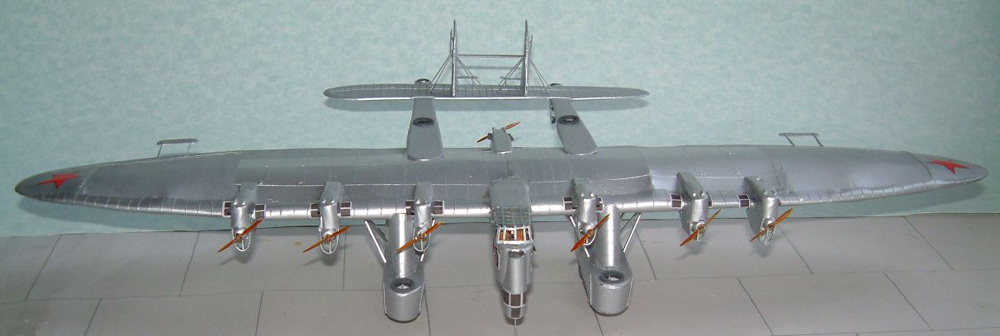
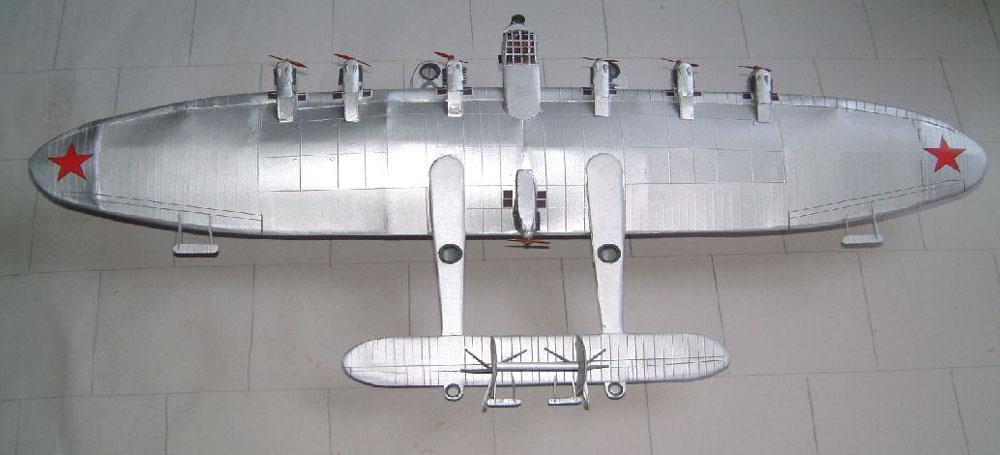
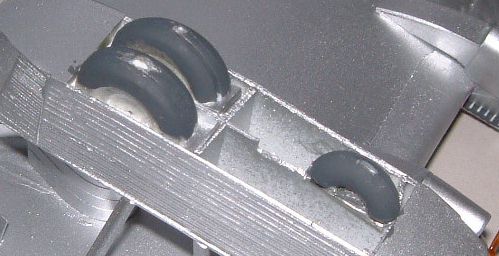
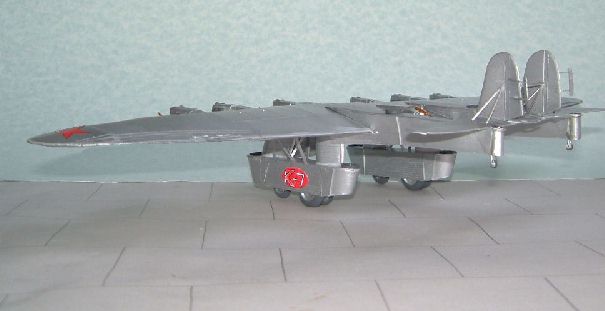
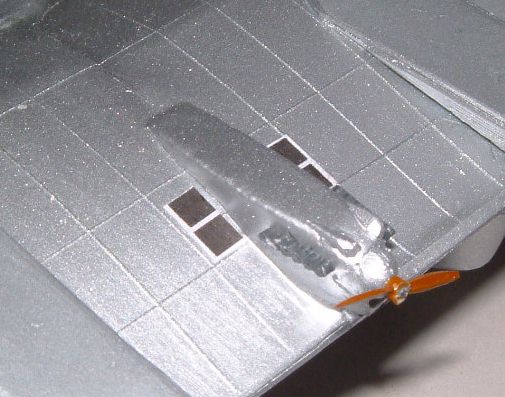
Next I made the cockpit nacelle from 15 thou sheet. The sides of this item had parts of it covered with corrugated metal sheet which I made by scraping the plastic with a fine razor saw. I left the nose of the nacelle open in order to add weight later on.
With the nacelle basically completed I turned to the six engines mounted on the leading edge of the wing. The nose of each was made by plunge forming it over a wooden shape and then attaching a shaped bit of sprue to it. This assembly was attached to the engine sides made from 20 thou sheet cut to the shape of the wing's leading edge. Once all was dry the six engines were mounted to the wing in their respective positions.
The twin V-shaped tail booms ere constructed out of 15 thou sheet using 40 thou formers to get the shape. With the booms attached to the wing, the tail surfaces made of folded 15 thou sheet were glued in place.
The enormous landing gears of the K-7 were fabricated out of 15 and 40 thou sheet and like the cockpit nacelle part of the covering was made of scraped corrugated plastic. The main columns connecting the gondolas to the wing were made of folded 15 thou sheet. The wheels came from the spares box. The two large and one small wheel were cut in half and glued to the underside of the gondolas. Small doors of 5 thou sheet were added to each gondola. Once the landing gears were dry and cleaned up they were attached to the bottom of the wing.
Then the whole model was painted silver straight out of a spray can. Nothing special there but I did give the fabric covered areas a couple coats of Tamiya flat base mixed with Future/Klear. The rest of the model was covered with a coat of plain Klear to protect the finish whilst the remainder of the modelling was done.
That completed the basic airframe but there were a myriad of details to put on the K-7 so I started with the seventh engine mounted on the trailing edge of the wing. This I made by plunge forming it over a wooden plug carved to shape. The gun positions all had rings made of strips of plastic joined to from O-rings. The two valve covers on each engine were made of tiny slivers of shaped Contrail Strut material and glued into place. Exhausts for the seven engines were fabricated out of sandwiched bits of 15 thou corrugated plastic sheet and cut to length, 14 in all. The servo trim tabs were made of 5 thou sheet and attached to the control surfaces with strips of 10 thou material. All seven propellers had to be scratch built from bits of plastic tubing for the hubs and 15 thou sheet for the blades.
I had to add a great deal of lead weight to the nose of the cockpit nacelle down but with that job done I plunge formed a canopy of clear plastic and attached with white glue after installing two little seats. All the rest of the glazing on the nacelle and wing were made on a computer and applied to their respective positions. The K-7 insignia was also done on a computer. A pitot was made of fuse wire and added to the nose. The struts for the undercarriage and tail surfaces were all from Contrail Strut material. The two tail wheels were made of bits of plastic tubing and flower arrangement wire. Lastly I added two red stars to the wing tips to give the beast some sort of identity.
Conclusion
That completed my model of one of the strangest and largest bombers made before or after 1934. As a footnote it may be of interest that poor old Konstantin Kalinin was arrest on trumped up charges of conspiracy and spying and executed 24 April, 1940. Another victim of Stalin's purges. I find it amazing the Russia could manage to build these incredible aircraft in such a climate. Say tuned for an even bigger and more incredible aeroplane from the same period.
